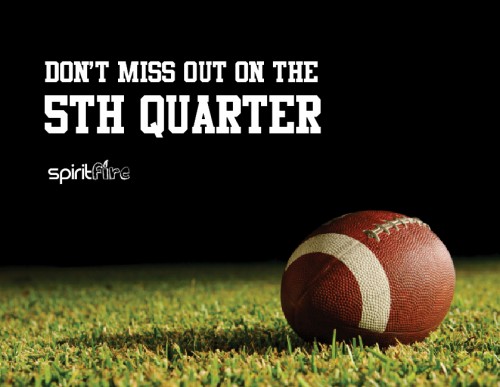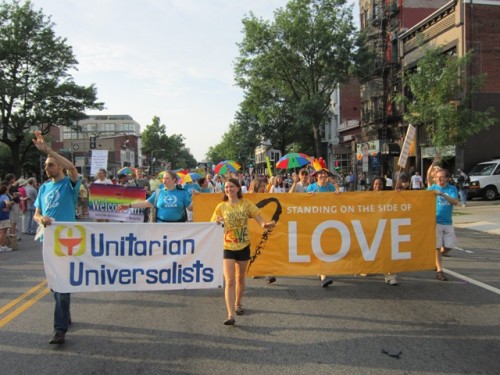When we talk about Pagans and interfaith, there are many different layers to consider, and different challenges inherent in each one. Because modern Paganism is a movement, an umbrella term for a number of distinct faith traditions, we have to expend almost as much energy on building relationships with each other as we do with Christians, Jews, Muslims, Hindus, or Buddhists. For modern Paganism as a movement to effectively interface with the rest of the world’s religions, we have to be conscious of how we are progressing with Pagan ecumenical and intrafaith initiatives.
Considering the fact that many non-Pagans still have a hard time understanding that Wicca isn’t Druidry, and that neither of those are Asatru, and that all of those are distinct from the many reconstructionist faiths, every Pagan involved in the global interfaith movement must be, to some extent, a default representative for all of us. This is not an ideal situation, but one that many individual Pagans find themselves in when they attend an interfaith gathering. Gatherings often predisposed to only focus on Abrahamic concerns.
In the latest edition of The Interfaith Observer, Don Frew, an official Covenant of The Goddess (COG) interfaith representative, talks about how 9/11 refocused interfaith efforts on peace, and on the dominant Abrahamic religions, making it harder for Pagans, indigenous traditions, and other minority religions to have their concerns addressed.
“The events of 9/11 had their roots in ancient conflicts among three Abrahamic faiths: Christianity, Judaism, and Islam. It was natural that the solution would be sought in dialogue among those faiths. The rest of us – some without any history of perpetrating religious violence – were shunted to the side. We watched what we had entered with optimism and enthusiasm about a fully inclusive movement, focused on issues of truly common concern, become ever more narrowly focused on one issue, rooted in in-fighting within one family of religions, the descendants of Abraham.
Where was the focus on economic justice, the environment, the concerns of women and indigenous people? Where were the representatives of the non-Abrahamic faiths? Repeatedly we were told that peace was now the highest priority for time and resources. Other program concerns have to wait. Repeatedly we were told that panels were full or that because the focus was on Abrahamic issues, other representatives were not as needed.”
Despite this attitude, which Frew says has started to subside somewhat, Pagans have made impressive strides in the global interfaith movement. Pagans currently serve on the Council for a Parliament of the World’s Religions, play important roles within the United Religions Initiative (URI), and participate in several smaller regional interfaith councils. While some Pagans are skeptical of these interactions, they can make us important allies in our own struggles, and help change misconceptions. Further, we are only enriched when we pursue greater fellowship, cooperation, and alliances with religions that do share some of our values.
At the beginning of this year, I wrote about Pagans and interfaith, and at that time I pushed not only for greater engagement with the global interfaith movement, but for Pagans to use the skills learned in that context towards strengthening our own community.
“Interfaith can not only humanize us to the ignorant, but also create powerful bonds with those we can learn much from. In addition, I believe that those of us who are engaging in interfaith need to take those skills and bring them back to practice them within our own movement, to bring better communication between faiths and traditions that have, at times, chaffed under the crowded “Pagan” umbrella.”
This would be Pagan ecumenicism, a word normally applied to relations between Christians, but one that, at its root, is very Pagan. It doesn’t seem immediately apparent, but a large proportion of Pagan events are in fact large ecumenical gatherings in which we humanize one another, seek common ground, and build a common vocabulary. PantheaCon, Pagan Spirit Gathering, Starwood, and Pagan Pride days, are all manifestations of Pagan ecumenicism, and are vital to making the term “Pagan” mean something. Many pan-Pagan initiatives are born at these events, and they represent those rare instances when Pagan leaders and clergy are able to mingle, socialize, and learn from one another. Without these events, we not only have a hard time relating to other Pagan faiths, but it becomes impossible to sometimes answer even basic questions that may be posed to us at the interfaith level.
Another vital element to both Pagan interfaith, and Pagan ecumenicism, is Pagan intrafaith, how relations are handled within a single religious grouping under our umbrella. Covenant of the Goddess is an excellent example of an Wiccan intrafaith effort, one that creates coalitions and empowers individuals like Don Frew, Rachael Watcher, and M. Macha Nightmare in their larger interfaith activities. Their yearly MerryMeet and Grand Council a chance to not only conduct business, but to strengthen bonds that have lasted for decades. Another example of a Pagan/Heathen intrafaith organization is The Troth, which seeks to build fellowship between practitioners of the pre-Christian religion(s) of the Germanic peoples. They, like COG, also hold a yearly meeting, called Trothmoot. Steven Abell, part of the Troth’s leadership (Rede), recently wrote about Trothmoot, and how best to deal with theological tensions that arise within Heathenry/Germanic Paganism.
“Each of these viewpoints [concerning the god Loki] significantly affects how people practice their Heathenry, but The Troth is not a sect. Somehow, we have to get all of these people drinking peaceably from the same horn at Trothmoot’s Grand Sumbel. If we can’t have frith, grith will do. […] What should our policy be? It needs to be based on the fact that The Troth is not a sect. It needs to pay attention to a wide range of strongly felt sensibilities. If you belong to this organization, don’t base your membership on any kind of belief that everyone here thinks just like you. This is religion and that’s not how it works. Furthermore, this is The Troth and that’s not how it works.”
Abell speaks to the important work of building fellowship at a basic level, between individuals who share (comparatively) large amounts in common, and how even that can be fraught with complications, challenges, and heated emotions. It may not seem like disputes between Heathens (or Wiccans, or Druids) are as important as working on the global stage, or even on finding common ground at the large Pagan ecumenical events, but the process Abell speaks to is vital in making our collective community “work”. If we are to collectively ask the world to pay attention to what we find important, vital to our survival, and our planet’s survival, we must do the sometimes frustrating work of building coalitions and understanding among ourselves.
As Pagans, we understand that we must tend to the microcosm in order to influence the macrocosm, that we must align our Will in our own lives if we ever hope to influence the wider world. In some circles this is called “As Above, So Below,” but the ethos transcends any one tradition’s teaching. Pagan interfaith is vitally important, but it rests on a foundation of Pagan ecumenicism and intrafaith work. Without that, our efforts to transmit our common values would fail, and our efforts on the global stage undermined. So let’s remember to do the real work of understanding those we already assume are with us, to build bridges among those we think we already understand, so that we can better communicate with those who don’t understand us at all.















